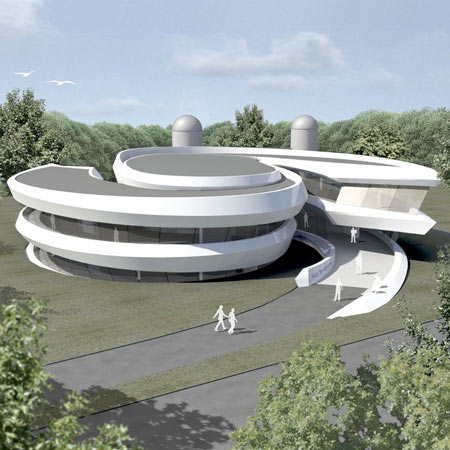
House of Astronomy by Bernhardt + Partners
Architects Bernhardt + Partners have designed an astronomy centre in Heidelberg, Germany.

Called House of Astronomy, the building will be used to give workshops and presentations about astronomy to school pupils, teachers and the public.
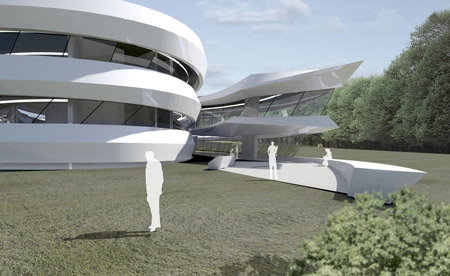
According to the architects, the structure is based on the shape of a spiral galaxy; offices and seminar rooms wrap around a central auditorium, which seats approximately 100 people.

Construction is due for completion in 2011
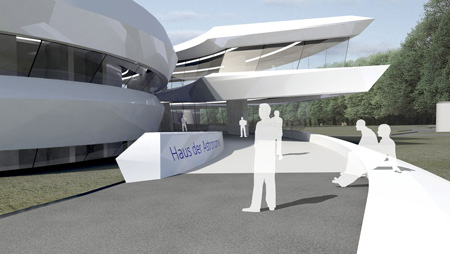
The following is from Bernhardt + Partners:
--
House of astronomy, Heidelberg (Germany)
The building will be used to teach pupils, teachers and the public the fascination of astronomical themes. Children and teenagers will be able to improve their basic knowledge on physics and mathematics through enthusiasm on astronomy. Workshops provide teachers with new ideas for presenting scientific subjects in the classrooms. The M51 spiral galaxy was used as the primary design key. The building geometry is derived from the galaxy core and their spiralling arms. The tracks, in which the stars, gas, dust and dark matter rotate around the centre of the galaxy, are used as snapshots and transferred into 3D curves. These 3-dimensional staggered curves form the peculiar cladding of the building.
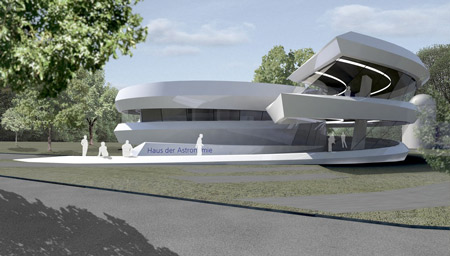
Three curves define a strip of facade that accumulates towards the centre of the building and is separated by a band of glass. Although on first sight it seems a point- symmetrical building, both the storey levels and the façade rotate around the centre of the building. As a result of that, the galaxy will not be transferred into a 2-dimensional picture but into a full 3-dimensional structure made of orbits. The sinuous spiral arms are shifted by a half storey and thus give extra support to the buildings rotational movement around the core.
By the mean of this entresol shift, new cross-links between the levels will be created. The auditorium in the centre of the galaxy is a multifunctional room for scientific lectures and astronomical displays with an All-dome projection system existing of a 12m diameter cupola and additional inclinable chairs.
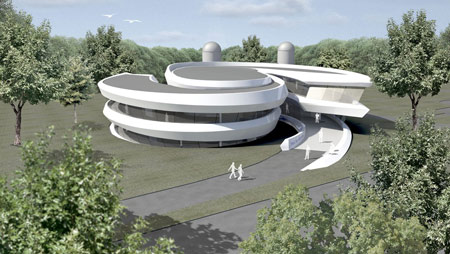
The overall 2700sqm net useable area of the building are provided through concrete slabs supported by one central cantilever that projects towards the column-free facades. This cantilever which is a mixture between a massive beam and a box girder rests on only a few central columns. Ramps will be designed to embrace the auditorium in the centre and will lead to different levels of the building. The cores of the main staircases will be designed to transfer vertical loads and work as horizontal reinforcements for the building structure.
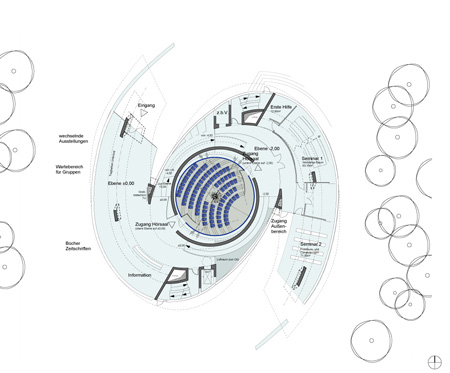
The surrounding facade of the building, working as a support and climate shield and therefore fulfilling the main physical tasks of the building, will be elevated onto the massive concrete slabs with recognizable distance. The secondary support system of the façade takes over the load transfer of dead loads, wind and snow-forces and transfers those forces into the ceiling slabs and the massive parapets.
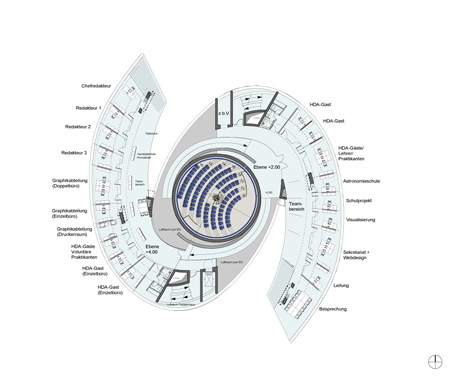
The construction work for the project of the Klaus-Tschira-Foundation and the Max-Planck-Society is intended to start next year. Until 2011 the building should be finished. Only the building costs are still written in the stars…
